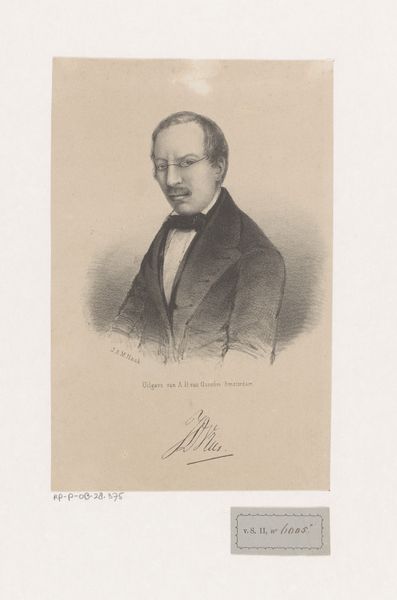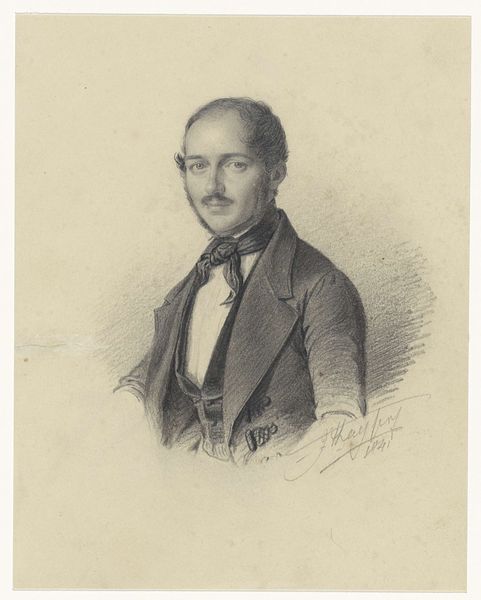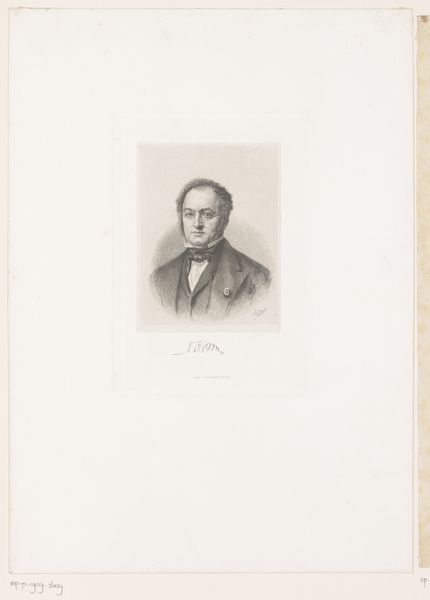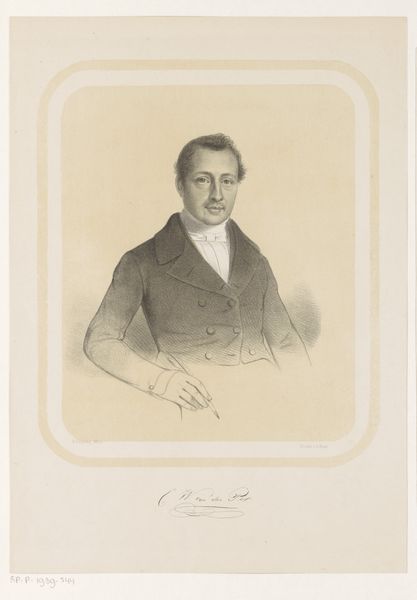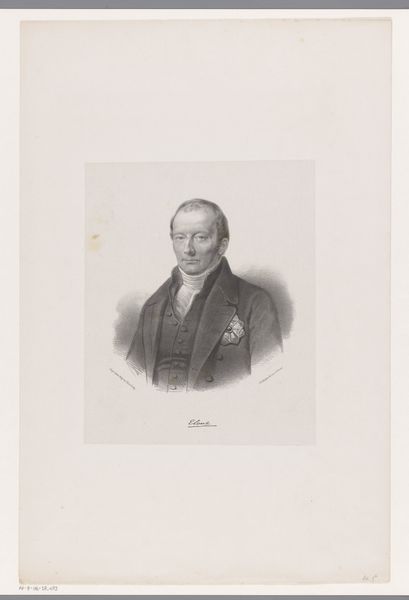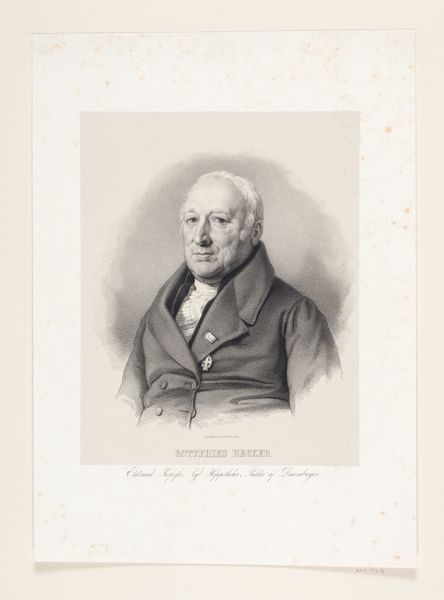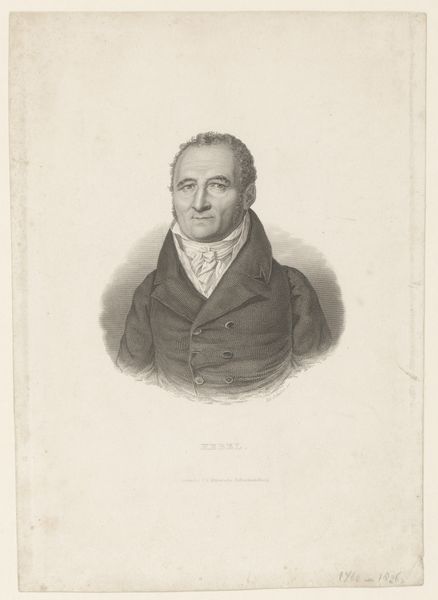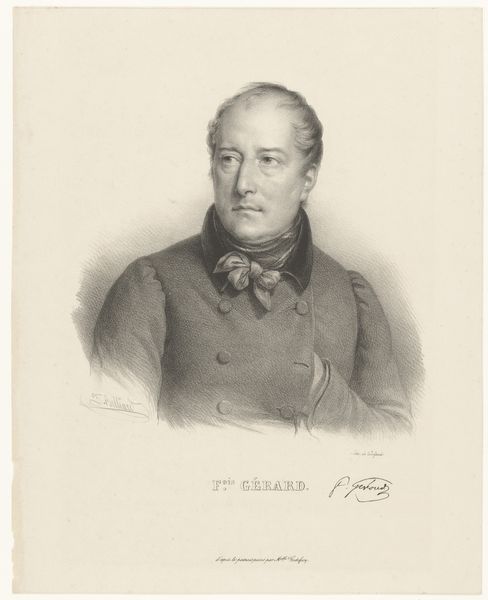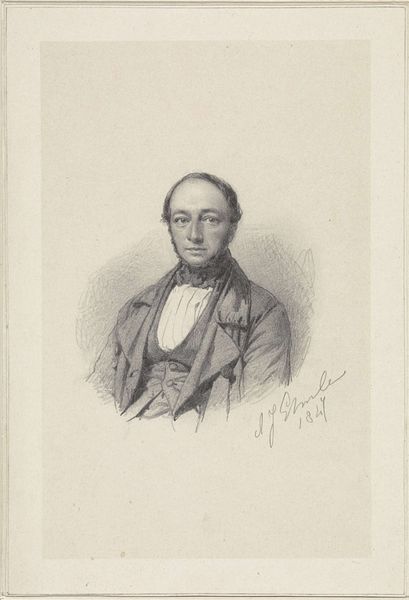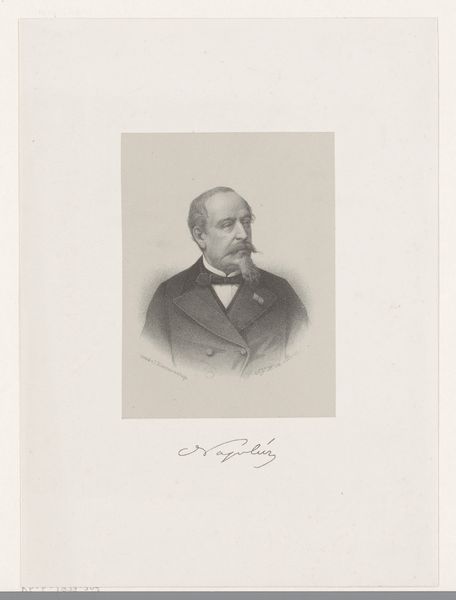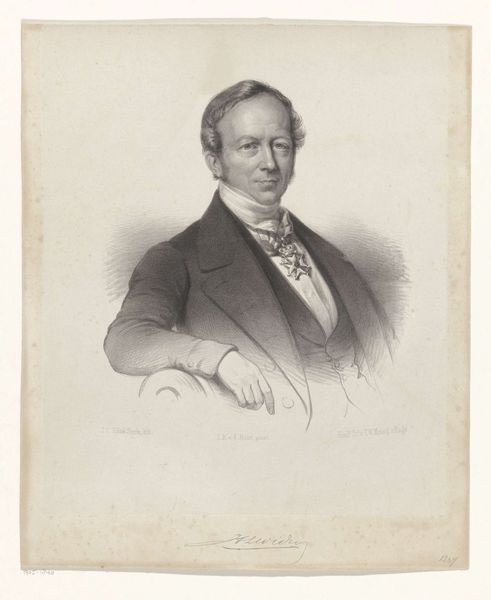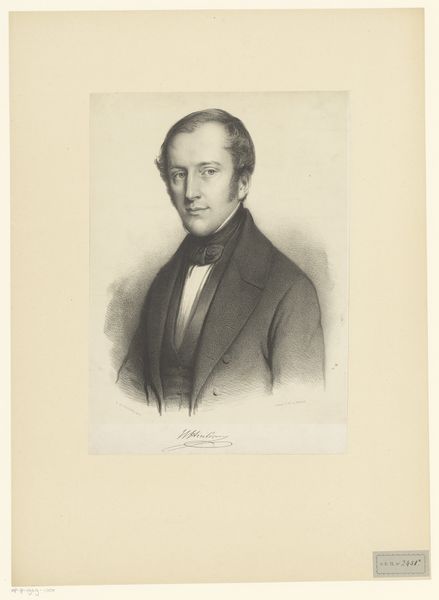
drawing, pencil
#
portrait
#
pencil drawn
#
drawing
#
caricature
#
pencil drawing
#
romanticism
#
pencil
#
portrait drawing
#
realism
Dimensions: height 549 mm, width 357 mm, height 362 mm, width 278 mm
Copyright: Rijks Museum: Open Domain
Editor: So, this is Johan Gorbitz's "Portret van Christopher Hansteen," made sometime between 1809 and 1853, a pencil drawing of a man in formal dress. It strikes me as a very formal portrait, almost stoic, but the medium, pencil, feels so intimate. What do you see in this piece? Curator: The portrait reflects the rise of the bourgeoisie and their increasing desire for representation in the arts. Consider how portraiture, historically reserved for aristocracy, begins depicting scientists, merchants, and other prominent figures like Hansteen. Note how the details of his medals and clothing showcase his status and achievements. Do you think the choice of pencil instead of oil paint affects the perception of status here? Editor: I guess it makes him seem more approachable, more human. A painting might feel more grandiose. Was there a purpose to this shift in portraiture? Curator: Absolutely. As societal structures shifted, the subjects and functions of art expanded. Portraiture became a tool for self-fashioning and commemorating individuals who contributed to society, shaping public opinion. How does understanding this social context alter your initial reading of "stoic?" Editor: It makes him feel less like an individual and more like a symbol of his class, of the changing times. He's representing progress, almost. Curator: Precisely. The portrait is no longer just about Hansteen, the man, but about the values and aspirations of a changing society. Considering these societal shifts adds layers to our interpretation. Editor: I hadn’t thought of it that way at all! Now I’m seeing the portrait as not just a depiction but as evidence of a huge social transition. Curator: And that’s the beauty of understanding art in its historical context – it opens up entirely new perspectives and understandings.
Comments
No comments
Be the first to comment and join the conversation on the ultimate creative platform.
